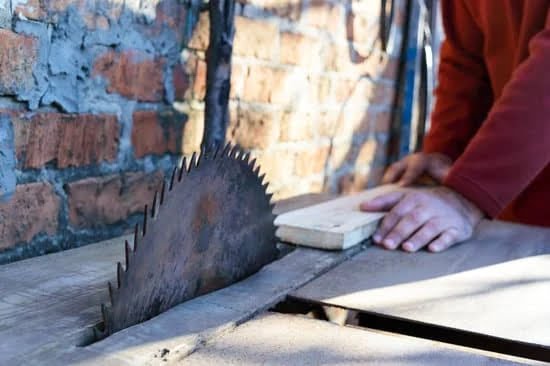What are clamps used for in woodworking? Clamps play a crucial role in woodworking, serving multiple purposes that are essential in various stages of woodworking projects. From holding pieces in place to ensuring a strong bond when gluing wood, clamps are indispensable tools for woodworkers. In this article, we will explore the different types of clamps used in woodworking and how they are utilized to improve the quality and accuracy of woodworking projects.
When it comes to woodworking, the use of clamps is vital for holding pieces of wood together during the assembly process. Whether it’s for constructing furniture or other wooden structures, clamps provide the necessary pressure and stability to keep the pieces aligned and secure. Additionally, clamps also play a crucial role in ensuring a strong bond when gluing wood, which is essential for creating durable and resilient wooden joints.
In addition to holding pieces in place and facilitating proper gluing techniques, clamps are also used for stabilizing pieces of wood while cutting, drilling, or sanding. By securing the workpiece firmly in place, woodworkers can perform these tasks with precision and safety.
Furthermore, clamps are essential for ensuring precise alignment when joining pieces of wood, contributing to the overall accuracy and quality of the finished product. Throughout this article, we will delve into the various functions of clamps in woodworking and provide practical tips for using them effectively.
Types of Clamps Used in Woodworking
Woodworking involves the use of various types of clamps to secure and hold pieces of wood in place during different stages of a project. Clamps are essential tools that provide stability, alignment, and pressure, ensuring that wood pieces are assembled and bonded effectively. When it comes to woodworking, understanding the different types of clamps available is crucial for achieving quality results.
Bar Clamps
One of the most commonly used clamps in woodworking is the bar clamp. These clamps feature a long bar with adjustable jaws that can be tightened or loosened using a screw mechanism. Bar clamps are versatile and can be used for a wide range of woodworking tasks, from holding pieces together during assembly to applying pressure when gluing or clamping for stability during cutting, drilling, or sanding.
Pipe Clamps
Another popular type of clamp is the pipe clamp, which consists of a pair of adjustable jaws connected by a length of pipe. Pipe clamps are known for their strength and flexibility, making them ideal for securing large or irregularly shaped workpieces. They are widely used in cabinetry and furniture making due to their ability to provide solid support and even pressure across the entire length of the workpiece.
C-Clamps and Hand Screw Clamps
C-clamps and hand screw clamps are often used for lighter-duty tasks in woodworking. C-clamps have a C-shaped frame with an adjustable screw mechanism for tightening, while hand screw clamps feature two wooden jaws connected by long screws. These types of clamps are useful for holding small or delicate pieces in place during precision work such as joinery or carving.
Understanding the specific functions and advantages of each type of clamp is essential for selecting the right tool for any woodworking project. Whether it’s holding pieces securely during assembly, ensuring precise alignment when joining wood, applying pressure for bending or gluing, or providing stability while working on intricate details, choosing the appropriate clamp is critical to achieving professional-quality results.
Holding Pieces in Place
Clamps play a crucial role in woodworking, especially when it comes to holding pieces of wood together during the assembly process. There are several types of clamps that serve this purpose, and each one has its unique features and benefits.
Types of clamps used in woodworking:
- Bar Clamps: These clamps are versatile and can be used for a wide range of woodworking tasks. They feature adjustable arms and provide strong, even pressure when holding pieces of wood together.
- Pipe Clamps: Pipe clamps are ideal for larger projects due to their long reach. They consist of a length of pipe threaded on both ends, allowing for flexibility in size.
- C-Clamps: These clamps have a simple design with wide openings, making them suitable for holding pieces firmly in place.
- Hand Screw Clamps: With wooden jaws and large screws, hand screw clamps are perfect for delicate work where marring the wood is a concern.
When it comes to woodworking, clamps are essential for ensuring that pieces of wood stay in place during the assembly process. Whether you’re building furniture or constructing cabinets, having the right clamps on hand is vital for a successful outcome.
Employing different types of clamps allows woodworkers to hold pieces at various angles and pressures while maintaining stability during glue-ups or complex assemblies. By using the appropriate clamp for each project’s specific needs, woodworkers can achieve precise alignment and create strong bonds between multiple pieces of wood.
Gluing and Clamping
When it comes to woodworking, gluing and clamping go hand in hand to ensure a strong and durable bond between pieces of wood. Clamps play a critical role in this process by providing the necessary pressure to hold the glued pieces together until the adhesive sets. This section will delve into the important role clamps play in ensuring a strong bond when gluing wood, as well as provide practical tips for using clamps effectively in this aspect of woodworking.
Clamp Selection for Gluing
Choosing the right type of clamp is crucial when it comes to gluing wood. Bar clamps, pipe clamps, and C-clamps are commonly used for this purpose. Bar clamps are versatile and provide even pressure across the entire length of the workpiece, while pipe clamps can be easily adjusted to accommodate different lengths of wood.
C-clamps are ideal for smaller projects or when extra pressure is needed in specific areas. Hand screw clamps are also useful for delicate or small-scale projects.
Proper Application of Clamping Pressure
When applying clamping pressure during the gluing process, it’s important to ensure that the pieces of wood are held firmly together without causing damage. The pressure should be sufficient to create a strong bond but not so much that it squeezes out all of the adhesive. Additionally, using scrap blocks on either side of the workpiece can help distribute pressure evenly and protect the wood from indentations caused by the clamp jaws.
Time and Patience
After applying glue and securing the pieces with appropriate clamping pressure, allowing sufficient time for the adhesive to cure is essential. Rushing this step can compromise the strength of the bond and lead to project failures. It’s important to follow manufacturer recommendations for curing times before removing the clamps.
Clamping for Stability
Below are some common types of clamps used for stabilizing pieces of wood in woodworking:
- Bar clamps: These are versatile clamps that can be adjusted to different lengths, making them ideal for securing larger pieces of wood during cutting or sanding.
- Pipe clamps: These clamps consist of a length of pipe with adjustable ends that can be tightened to hold pieces of wood in place. They are commonly used for securing parts during glue-ups and assembly.
- C-clamps: With their simple design and powerful grip, C-clamps are often used to stabilize smaller pieces of wood while drilling or shaping.
One key function of using clamps for stability is to prevent the risk of accidents or injuries when working with power tools such as saws or drills. Clamping the workpiece securely in place reduces the likelihood of it slipping or moving unexpectedly, which could lead to dangerous situations. Additionally, having the piece firmly held in position allows for more precise and accurate woodworking results.
This is especially important when working on projects that require intricate cuts or detailed shaping. By utilizing the right type of clamp for the specific task at hand, woodworkers can ensure a safe and efficient work environment.
Clamping for Alignment
When it comes to woodworking, precise alignment is crucial for ensuring that pieces of wood fit together seamlessly. This is where clamps play a vital role in the woodworking process. Clamps are essential for holding pieces of wood in place while they are being joined, helping to maintain perfect alignment throughout the assembly process.
One common scenario where clamps are used for alignment is when joining two pieces of wood at a 90-degree angle to create a corner joint, such as when constructing a wooden frame or box. In this case, clamps are applied across the joint to hold the pieces firmly together while glue is applied and left to dry.
Without the use of clamps, it would be extremely challenging to ensure that the pieces stay in position and maintain the desired alignment during this critical stage of assembly.
Another situation where clamps are indispensable for alignment is when creating edge-to-edge joints, such as when constructing tabletops or panels. In this application, clamps are used to press two adjoining edges tightly together, ensuring that they form a perfectly flush and straight seam once the adhesive has been applied. The pressure exerted by the clamps helps to eliminate any gaps or irregularities along the joint, resulting in a seamless and professional-looking finished product.
In summary, when it comes to joining pieces of wood, whether at right angles or along their edges, using clamps is essential for maintaining precise alignment throughout the assembly process. Whether you’re working on small-scale projects like picture frames or larger endeavors like cabinetry and furniture making, having a selection of high-quality clamps at your disposal will greatly contribute to the success and quality of your woodworking projects.
| Clamping Application | Example |
|---|---|
| 90-Degree Corner Joint | Constructing wooden frames or boxes |
| Edge-to-Edge Joint | Creating tabletops or panels |
Clamping for Pressure
Clamps are an essential tool in woodworking for applying pressure to bend wood or hold laminates in place. When working on projects that involve bending wood, such as creating curved furniture pieces or decorative trim, clamps are crucial for ensuring the wood retains its new shape. Additionally, when applying laminates to surfaces, clamps play an important role in securing the material firmly in place while the adhesive sets.
One common application of clamps for bending wood is in the construction of curved chair backs or arms. Woodworkers carefully select the appropriate type and size of clamp to apply even pressure along the entire length of the curved piece, allowing it to retain its shape as it dries. For laminates, clamps are used to secure the material against a surface while adhesive sets, ensuring a strong bond and preventing air bubbles or imperfections.
In both cases, using specialized clamping tools such as spring clamps or band clamps can help achieve consistent pressure without damaging the wood or laminate material. Woodworkers should take care to select clamps that provide sufficient pressure without exerting excessive force that could damage the materials being worked on.
| Application | Example |
|---|---|
| Bending Wood | Curved chair backs or arms |
| Holding Laminates | Laminating surfaces such as tabletops or cabinets |
Tips for Using Clamps Effectively
Clamps are an essential tool in woodworking, and using them effectively can make a significant difference in the quality of the finished piece. Whether you are a beginner or an experienced woodworker, it’s important to understand the different types of clamps and how to use them properly. Here are some practical tips for using clamps effectively in woodworking projects.
First and foremost, it’s crucial to select the right type and size of clamp for the job. Different clamps serve different purposes, so understanding their functions is key to achieving successful results. For example, bar clamps are ideal for gluing large panels together, while C-clamps are more suitable for holding smaller pieces in place. Additionally, pipe clamps are excellent for edge gluing, and hand screw clamps work well for delicate workpieces.
Once you have chosen the appropriate clamp for your project, it is essential to position them correctly. When gluing pieces of wood together, ensure that the pressure from the clamp is evenly distributed across the entire joint. An uneven distribution of pressure can result in weak or misaligned joints. Additionally, make sure to apply just enough pressure to close the joint without over-tightening the clamp, which could lead to warping or damage to the wood.
Lastly, always prioritize safety when using clamps in woodworking. Inspect your clamps regularly for any signs of wear and tear, and replace any damaged or worn-out parts immediately. It’s also important to use protective materials such as scrap wood or padding between the clamp jaws and your workpiece to prevent damage. By following these tips and techniques, woodworkers can maximize the effectiveness of their clamping tools and achieve professional results in their projects.
Conclusion
In conclusion, it is clear that clamps are an essential tool in woodworking, serving a variety of purposes to ensure the successful completion of projects. Whether it’s holding pieces in place during assembly, providing pressure for gluing and bending wood, or ensuring precise alignment and stability, clamps play a crucial role in every stage of the woodworking process. Without the use of clamps, achieving professional-quality results would be nearly impossible.
For woodworkers looking to invest in high-quality tools for their projects, it is important to recognize the significance of choosing the right clamps. Investing in sturdy, durable clamps will not only improve the quality of finished products but also contribute to safety in the workshop. By carefully selecting different types of clamps based on project needs and following best practices for their use, woodworkers can enhance their craftsmanship and efficiency.
Ultimately, what are clamps used for in woodworking? The answer lies in their versatility and indispensable role throughout the entire woodworking process. Therefore, it is highly recommended that woodworkers prioritize the investment in quality clamps as part of their toolkit. With the right selection of clamps and proper application techniques, woodworkers can elevate the precision and professional finish of their creations while ensuring a safe and enjoyable woodworking experience.
Frequently Asked Questions
What Is the Purpose of a Table Clamp?
The purpose of a table clamp is to securely hold an object or material in place on a flat surface, such as a table or workbench. This allows for hands-free work and provides stability when drilling, cutting, or working on the object.
What Are the Uses of Clamps in Crafting?
Clamps are commonly used in crafting to hold materials together while glue dries, to secure pieces in place while painting or staining, and to provide stability when sawing or sanding wood or other materials. They are essential tools for ensuring precision and accuracy in various crafting projects.
What Is the Function of a Clamping Tool?
The function of a clamping tool is to exert pressure to hold objects firmly together. This can be achieved through various types of clamps such as C-clamps, bar clamps, spring clamps, and quick-release clamps. Clamping tools are crucial for woodworking, metalworking, crafting, and other applications where holding objects in place is necessary for the completion of tasks.

Hi everyone! I’m a woodworker and blogger, and this is my woodworking blog. In my blog, I share tips and tricks for woodworkers of all skill levels, as well as project ideas that you can try yourself.





